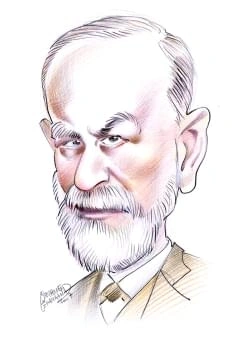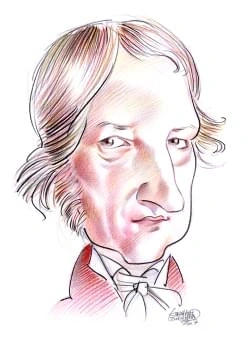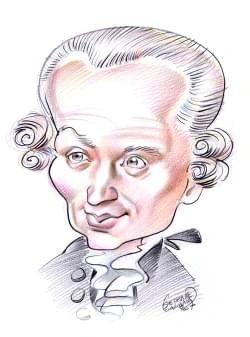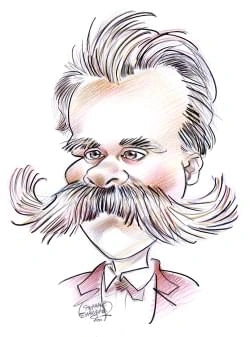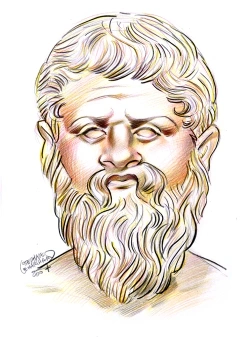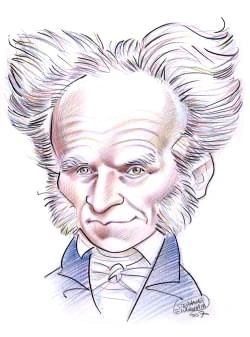838 résultats pour "early"
-
New Hampshire - geography.
Washington. D1 Temperature The coldest parts of the state are in the White Mountains and the extreme north. Average January temperatures range from about -11° C (about 12° F) along theCanadian border to about -3° C (about 26° F) along the coast. July temperatures range from about 17° C (about 63° F) in the mountains to about 21° C (about 70° F)in the south. D2 Precipitation Precipitation is evenly distributed throughout the year over most of the state. However, the higher peaks of the White Mo...
-
New Hampshire - USA History.
Washington. D1 Temperature The coldest parts of the state are in the White Mountains and the extreme north. Average January temperatures range from about -11° C (about 12° F) along theCanadian border to about -3° C (about 26° F) along the coast. July temperatures range from about 17° C (about 63° F) in the mountains to about 21° C (about 70° F)in the south. D2 Precipitation Precipitation is evenly distributed throughout the year over most of the state. However, the higher peaks of the White Mo...
-
Metalwork
I
INTRODUCTION
Metalwork, in the fine arts, objects of artistic, decorative, and utilitarian value made of one or more kinds of metal--from precious to base--fashioned by either casting,
hammering, or joining or a combination of these techniques.
Early Bronze DiskThis disk with the head of Acheloos, an Etruscan river god, was made of bronze, an alloy of copper and tin, sometime inthe early 5th century bc. It comes from the necropolis of Monte Quaglieri in Tarquinia. Alloys are made by smelting twodifferent metals together.Scala/Art Resource, NY Knowledge of smelting ultimately led to knowledge of mixing different ores together in the smelting process to produce simple alloys. This followed an intermediateperiod, about 3000 BC, when comp...
-
Connecticut - geography.
The state’s shoreline, when all the bays and inlets are taken into account, has a total length of 995 km (618 mi). The coastline is deeply indented by long estuaries androcky inlets, and there are many sandy beaches and stretches of tidal marsh. There are several good harbors along the coast, the most important of which is at NewHaven. A few small islands lie offshore in Long Island Sound. D Climate Connecticut has long, hot summers and cold winters. The climate does not vary greatly from place...
-
Connecticut - USA History.
The state’s shoreline, when all the bays and inlets are taken into account, has a total length of 995 km (618 mi). The coastline is deeply indented by long estuaries androcky inlets, and there are many sandy beaches and stretches of tidal marsh. There are several good harbors along the coast, the most important of which is at NewHaven. A few small islands lie offshore in Long Island Sound. D Climate Connecticut has long, hot summers and cold winters. The climate does not vary greatly from place...
-
Georgia (country) - country.
1917. During the subsequent Soviet period, religious practice was strongly discouraged because the Soviet state was officially atheistic; however, the GeorgianOrthodox Church was allowed to function openly. Orthodox Christianity is the religion of about 58 percent of the Georgian population. Muslims represent about 19 percent of the country’s population, with ethnicAzerbaijanis, Kurds, and Ajars comprising the principal Muslim groups. Ajars are ethnic Georgians who converted to Islam in the 17th...
-
Comet - astronomy.
may exceed the planet Jupiter in size, however. Observations from telescopes on Earth and in space indicate that most of the gases in the coma and tail of a comet are fragmentary molecules, or radicals, of the mostcommon elements in space: hydrogen, carbon, nitrogen, and oxygen. The radicals, for example, of CH, NH, and OH may be broken away from the stable molecules CH 4 (methane), NH 3 (ammonia), and H 2O (water), which may exist as ices or more complex, very cold compounds in the nucleus. Al...
-
Herman Melville
I
INTRODUCTION
Herman Melville
These lines (recited by an actor) begin the novel Moby Dick (1851), by Herman Melville.
short novel Billy Budd in manuscript form. Melville’s death in New York City on September 28, 1891, went virtually unnoticed. None of his books was still in print. VI MELVILLE’S EARLY WORKS With the exception of Mardi , all of Melville’s early books are narratives of maritime adventure based upon his own experiences and on his wide reading. Although London publisher John Murray accepted Typee for his Home and Colonial Library as a strictly factual account of South Seas travel, he was lar...
-
-
Tennis.
and interpret rules. The head official on the court, called the chair umpire, sits on a tall chair at one end of the net. A varying number of line judges sit around the courtbeyond the path of the players. Line judges determine whether serves and shots are good or out. A net-cord judge may be employed to determine when a ball touchesthe top of the net, and a foot-fault judge may watch for that specific infraction. In the 1980s electronic devices began to be used in some professional tournaments...
-
Paris (city, France) - geography.
and its vibrant public square, frequented by street performers, soon became among the most popular landmarks in the city. West of the Pompidou Center is Les Halles, the site of the central market of Paris from the 12th century until 1969. The market was subsequently replaced by the Forum LesHalles, a multilevel underground complex featuring a shopping mall, museums, the Paris film library ( vidéothèque ), and a sports center. The street level of Les Halles features a garden, the Jardin des Halle...
-
Indianapolis - geography.
Amateur athletic competitions are frequent in Indianapolis. Each summer it is the site for the finals of the Hoosier State Games, with athletes of all ages and skill levelscompeting in 21 sports. In 1987 Indianapolis hosted the Tenth Pan American Games, and is often the site for numerous Olympic trials and collegiate sportschampionships. Among the many sports facilities are those for tennis, bicycle racing, skating, and track and field. The city’s professional football team, the Indianapolis Col...
-
Nebraska - geography.
by natural resource districts to limit the rate of pumping for irrigation. C Climate Nebraska has a typical continental climate with wide seasonal variations in temperature. C1 Temperature Winter temperatures below -20°C (0° F) and summer temperatures in the upper 30°s C (lower 100°s F) are common. The average January temperature varies from about -7° C (about 20° F) in the northeast to about -2° C (about 29° F) in the southwest. The average for July, thehottest month, ranges from about 26° C...
-
Nebraska - USA History.
by natural resource districts to limit the rate of pumping for irrigation. C Climate Nebraska has a typical continental climate with wide seasonal variations in temperature. C1 Temperature Winter temperatures below -20°C (0° F) and summer temperatures in the upper 30°s C (lower 100°s F) are common. The average January temperature varies from about -7° C (about 20° F) in the northeast to about -2° C (about 29° F) in the southwest. The average for July, thehottest month, ranges from about 26° C...
-
Sigmund Freud.
reminiscences from the past and about her daydreams. Remarkably, as her narrative revisited memories from the past, which were associated with the onset of aparticular symptom, each symptom disappeared when accompanied by an emotional outburst. Breuer made use of this discovery to eliminate her symptoms one at atime. He called the treatment the cathartic technique (from the Greek katharsis meaning “purgation”). The treatment was time consuming and required considerable effort to reach dimly re...
-
Central America - Geography.
F Animal Life Most of the animal life of Central America is similar to that of South America, but some animals have ties with North America. The marley and opossum have links withSouth America, as do the jaguar, ocelot, jaguarundi, and margay, which are members of the cat family. In contrast, the puma, gray fox, and coyote are of NorthAmerican origin. The armadillo, anteater, and sloth have ties to the south, deer to the north. The large manatee, an aquatic plant eater, survives in the isolated...
-
Maine - geography.
temperatures range from 17° to 21°C (62° to 70°F) with the southern interior being the warmest and the east coast and north the coolest. However, daytime summertemperatures may reach the lower 30°s C (lower 90°s F), and temperatures in winter have fallen as low as -44°C (-48°F) in the interior. D2 Precipitation Precipitation (rainfall and snowfall) in Maine is evenly distributed throughout the year. Most areas receive from 860 to 1,020 mm (34 to 40 in) yearly, although parts ofthe coast are som...
-
-
Maine - USA History.
temperatures range from 17° to 21°C (62° to 70°F) with the southern interior being the warmest and the east coast and north the coolest. However, daytime summertemperatures may reach the lower 30°s C (lower 90°s F), and temperatures in winter have fallen as low as -44°C (-48°F) in the interior. D2 Precipitation Precipitation (rainfall and snowfall) in Maine is evenly distributed throughout the year. Most areas receive from 860 to 1,020 mm (34 to 40 in) yearly, although parts ofthe coast are som...
-
Maryland - geography.
Maryland has no large natural lakes. The largest body of water is a reservoir, Deep Creek Lake, which has a surface area of only 18 sq km (7 sq mi). It lies on theAllegheny Plateau, behind a dam on a tributary of the Youghiogheny River. C Coastline The deeply indented shoreline has a length of 5,134 km (3,190 mi), of which only 50 km (31 miles) fronts on the Atlantic Ocean. The most significant coastal feature isChesapeake Bay. In the bay are many islands and Kent Island is the largest. The sta...
-
Maryland - USA History.
Maryland has no large natural lakes. The largest body of water is a reservoir, Deep Creek Lake, which has a surface area of only 18 sq km (7 sq mi). It lies on theAllegheny Plateau, behind a dam on a tributary of the Youghiogheny River. C Coastline The deeply indented shoreline has a length of 5,134 km (3,190 mi), of which only 50 km (31 miles) fronts on the Atlantic Ocean. The most significant coastal feature isChesapeake Bay. In the bay are many islands and Kent Island is the largest. The sta...
-
Ethiopia - country.
constitute about 6 percent of the population. The Somali, who live in the east and southeast, notably in the Ogadēn region, are about equal in number to the Shangalla.The Denakil inhabit the semidesert plains east of the highlands. The nonindigenous population includes Yemenis, Indians, Armenians, and Greeks. B Political Divisions Ethiopia is divided into nine regions composed of specific ethnic groups. The regions, which have a significant degree of autonomy, are Tigray; Afar; Amhara; Oromia;S...
-
Native Americans of Middle and South America.
A line that snakes across central Mexico near the Tropic of Cancer forms the northern boundary of Mesoamerica; north of this line rainfall sharply declines and theclimate is much drier. The ancient civilizations of Mesoamerica all arose and developed in the area between this line and the Guatemalan highlands far to the south. Richvolcanic soils are found throughout much of the region. A2 People and Languages Mesoamerica was a great melting pot, home to many peoples and interrelated cultures. In...
-
New Jersey - geography.
C Soils Broadly defined, all of New Jersey’s soils are podzolic soils; that is, they are acidic and contain fairly high amounts of iron oxides. The soils in northern New Jersey areirregular in quality and contain rock fragments and small stones deposited by the continental glaciers of the last Ice Age. The soils of the inner coastal plain, unaffectedby glaciation, are the richest in the state, while those of the outer coastal plain are generally infertile. The newer soil classification system d...
-
New Jersey - USA History.
C Soils Broadly defined, all of New Jersey’s soils are podzolic soils; that is, they are acidic and contain fairly high amounts of iron oxides. The soils in northern New Jersey areirregular in quality and contain rock fragments and small stones deposited by the continental glaciers of the last Ice Age. The soils of the inner coastal plain, unaffectedby glaciation, are the richest in the state, while those of the outer coastal plain are generally infertile. The newer soil classification system d...
-
Iraq - country.
The Euphrates begins in Turkey, crosses Syria, and enters Iraq at Abū Kam āl. The flow of the Euphrates into Iraq has been greatly reduced by dams built by Turkeyand Syria. The gradient of the Euphrates above the town of H īt, in west central Iraq, is steep. In the 2,640 km (1,640 mi) from its source in Turkey to H īt, the river fallsfrom 3,000 m (10,000 ft) to a low water elevation of 50 m (170 ft) above sea level, an average drop of 1 m per km (6 ft per mi). In Iraq below H īt the fall is very...
-
-
Wyoming (state) - geography.
The basins, which lie in the rain shadow of mountains, are very dry, with an average annual precipitation of about 250 mm (about 10 in) or less; the Great Plains regionhas an annual average of about 380 mm (about 15 in), and the Black Hills region receives slightly more. Thunderstorms and hailstorms are relatively frequent insummer. The annual snowfall ranges from about 500 mm (about 20 in) in the Bighorn Basin to well over 5,100 mm (over 200 in) in the higher mountains, where annualprecipitatio...
-
Wyoming (state) - USA History.
The basins, which lie in the rain shadow of mountains, are very dry, with an average annual precipitation of about 250 mm (about 10 in) or less; the Great Plains regionhas an annual average of about 380 mm (about 15 in), and the Black Hills region receives slightly more. Thunderstorms and hailstorms are relatively frequent insummer. The annual snowfall ranges from about 500 mm (about 20 in) in the Bighorn Basin to well over 5,100 mm (over 200 in) in the higher mountains, where annualprecipitatio...
-
South Korea - country.
forest habitat, and overhunting. The Siberian tiger has not been sighted in the wild in South Korea since the 1920s; the Asiatic black bear can still be found in someremote mountain areas. Several species of deer are indigenous to the peninsula, including the roe deer, water deer, and Siberian musk deer. The musk deer, which hasbeen overhunted for its musk glands, is legally protected as a threatened species. Smaller mammals indigenous to the peninsula include the wild boar, red fox, badger,rabb...
-
Native American Architecture.
B Relationship to the Universe and Nature A more profound difference between European American and Native American perceptions lay in how human beings saw themselves in relationship to the universe andin what they believed their responsibilities were to the natural world and to each other. Most European Americans saw themselves as separate from creation andadversaries of nature, ever struggling to conquer and subdue nature and force it to yield to their will. Native Americans saw themselves as...
-
Italian Literature
I
INTRODUCTION
Italian Literature, literature written in the Italian language from about the 13th century to the present.
Dante’s Inferno and PurgatoryThis illustration comes from a late Gothic edition of The Divine Comedy by the great Italian poet Dante Alighieri. Lucifer,the devil, is at the center of Earth, and the mouth of hell, the inferno, opens below him. At the opposite pole is a mountainleading to purgatory. The manuscript is in the National Library in Florence, Italy.Scala/Art Resource, NY Dante is one of the great figures of world literature. He is remarkable for the loftiness of his thought, the vividne...
-
American Literature: Drama
I
INTRODUCTION
American Literature: Drama, literature intended for performance, written by Americans in the English language.
American plays, while still a minority, began to appear in the theater repertory in the 19th century. Although American plays were still styled after British models, theirsubject matter came to be based on specifically American incidents or themes. In the United States as in Britain, many plays reflected the influence of romanticism , a European literary and artistic movement. Melodrama, with its outpourings of emotion, was the most prevalent dramatic form in the 19th century. Gothic melodramas...
-
Tennessee (state) - geography.
The climate of Tennessee is characterized by hot summers, mild winters, and abundant rainfall. C1 Temperature Average July temperatures range from less than 21° C (70° F) in the Blue Ridge region to 27° C (80° F) at Nashville and Memphis. Maximum daytime temperatures insummer often rise above 35° C (95° F) in central and western Tennessee. Daytime temperatures in the mountains rarely rise above 32° C (90° F). Summer nights tendto be warm and muggy in central and western Tennessee, but temperatu...
-
Tennessee (state) - USA History.
The climate of Tennessee is characterized by hot summers, mild winters, and abundant rainfall. C1 Temperature Average July temperatures range from less than 21° C (70° F) in the Blue Ridge region to 27° C (80° F) at Nashville and Memphis. Maximum daytime temperatures insummer often rise above 35° C (95° F) in central and western Tennessee. Daytime temperatures in the mountains rarely rise above 32° C (90° F). Summer nights tendto be warm and muggy in central and western Tennessee, but temperatu...
-
-
Kentucky - geography.
The climate of Kentucky is characterized by warm or hot summers and cool winters. Throughout the year, temperatures do not vary greatly from place to place,although they are generally slightly lower in the Appalachian Plateaus region than elsewhere in the state. Average July temperatures are usually from 24° to 27°C (76°to 80°F) in the central and western areas and from 23° to 24°C (74° to 76°F) in the east. January averages range from below 1°C (34°F) in the northern Bluegrassregion to more tha...
-
Kentucky - USA History.
The climate of Kentucky is characterized by warm or hot summers and cool winters. Throughout the year, temperatures do not vary greatly from place to place,although they are generally slightly lower in the Appalachian Plateaus region than elsewhere in the state. Average July temperatures are usually from 24° to 27°C (76°to 80°F) in the central and western areas and from 23° to 24°C (74° to 76°F) in the east. January averages range from below 1°C (34°F) in the northern Bluegrassregion to more tha...
-
Spain - country.
B Natural Resources Spain has a number of mineral resources. The largest known deposits are of iron ore, zinc, and lead. Spain also produces significant quantities of copper and mercury.These deposits are mined mainly in Huelva province in southwestern Spain, around Cartagena on the Mediterranean, and at various points along the Bay of Biscay inthe north. Additionally, uranium is mined in the region of Extremadura, near the Portuguese frontier, where pyrites, fluorspar, gypsum, tungsten, and po...
-
Moon - astronomy.
B Volcanic Features Maria, domes, rilles, and a few craters display indisputable characteristics of volcanic origin. Maria are plains of dark-colored rock that cover approximately 40 percent ofthe Moon's visible hemisphere. The maria formed when molten rock erupted onto the surface and solidified between 3.16 billion and 3.96 billion years ago. This rockresembles terrestrial basalt, a volcanic rock type widely distributed on Earth, but the rock that formed the maria has a higher iron content an...
-
Ontario - Geography.
governed Ontario’s initial settlement and development. The province’s most important river is the St. Lawrence. Its route was much improved and enlarged by dredgingand canal building in the mid-20th century. This enabled large ocean-going vessels to reach Great Lake ports ( see St. Lawrence Seaway). The Ottawa River was an important early route to the interior for fur traders and timber merchants. The Niagara River, because of its falls, is a great center of hydroelectric power as well as aninte...
-
Ontario - Canadian History.
governed Ontario’s initial settlement and development. The province’s most important river is the St. Lawrence. Its route was much improved and enlarged by dredgingand canal building in the mid-20th century. This enabled large ocean-going vessels to reach Great Lake ports ( see St. Lawrence Seaway). The Ottawa River was an important early route to the interior for fur traders and timber merchants. The Niagara River, because of its falls, is a great center of hydroelectric power as well as aninte...
-
Alberta - Geography.
C Climate Except for the mountain areas, summers throughout the province are quite warm. Winters are long and extremely cold. In July, average daily temperatures range fromabout 16°C (about 60°F) along the northern boundary to about 21°C (about 70°F) in the south. In the extreme southeastern section of the province, temperatures of43°C (110°F) have been recorded. In January, average daily temperatures range from about -14°C (about 6°F) at Grande Prairie to about -9°C (about 16°F) atCalgary. Tem...
-
Alberta - Canadian History.
C Climate Except for the mountain areas, summers throughout the province are quite warm. Winters are long and extremely cold. In July, average daily temperatures range fromabout 16°C (about 60°F) along the northern boundary to about 21°C (about 70°F) in the south. In the extreme southeastern section of the province, temperatures of43°C (110°F) have been recorded. In January, average daily temperatures range from about -14°C (about 6°F) at Grande Prairie to about -9°C (about 16°F) atCalgary. Tem...
-
-
Italy - country.
C Natural Resources Italy is poor in natural resources. Much of the land is unsuitable for agriculture because of mountainous terrain or unfavorable climate. Italy, moreover, lacks substantialdeposits of basic natural resources such as coal, iron, and petroleum. Natural gas is the country’s most important mineral resource. Other deposits include feldspar andpumice. Many of Italy’s mineral deposits on the islands of Sicily and Sardinia had been heavily depleted by the early 1990s. Italy is rich...
-
Slavery in Africa.
The spread of Islam from Arabia into Africa after the religion’s founding in the 7th century AD affected the practice of slavery and slave trading in West, Central, and East Africa. Arabs had practiced slave raiding and trading in Arabia for centuries prior to the founding of Islam, and slavery became a component of Islamic traditions.Both the Qur'an (Koran) (the sacred scripture of Islam) and Islamic religious law served to codify and justify the existence of slavery. As Muslim Arabs conquered...
-
West Virginia - geography.
Forests, mostly of hardwood varieties, cover 79 percent of West Virginia. The principal commercial species are the oak, yellow poplar, maple, birch, beech, black walnut,hickory, and gum. Softwoods include pines and hemlock firs. Flowering trees include the wild crab apple, dogwood, hawthorn, and redbud. Among the many floweringbushes and plants are the rhododendron, which is the state flower, the laurel, blueberry, hepatica, wild geranium, and black-eyed Susan. Insects and disease, mostly introd...
-
West Virginia - USA History.
Forests, mostly of hardwood varieties, cover 79 percent of West Virginia. The principal commercial species are the oak, yellow poplar, maple, birch, beech, black walnut,hickory, and gum. Softwoods include pines and hemlock firs. Flowering trees include the wild crab apple, dogwood, hawthorn, and redbud. Among the many floweringbushes and plants are the rhododendron, which is the state flower, the laurel, blueberry, hepatica, wild geranium, and black-eyed Susan. Insects and disease, mostly introd...
-
United States Government.
Article II establishes an executive department headed by a president and vice president. The article further describes the powers of the offices, the manner of election,and the qualifications for office. Of special significance is the president’s constitutional role as commander of the nation’s armed forces, which assures civilian controlover the military. Because the president is the head of the armed forces and only Congress can declare war, the authority of the military is diffused and its po...
-
United States History - U.
and improved upon the designs of Arab sailing ships and learned to mount cannons on those ships. In the 15th century they began exploring the west coast ofAfrica—bypassing Arab merchants to trade directly for African gold and slaves. They also colonized the Madeira Islands, the Azores, and the Cape Verde Islands andturned them into the first European slave plantations. The European explorers were all looking for an ocean route to Asia. Christopher Columbus sailed for the monarchs of Spain in 149...
-
United States History - U.
and improved upon the designs of Arab sailing ships and learned to mount cannons on those ships. In the 15th century they began exploring the west coast ofAfrica—bypassing Arab merchants to trade directly for African gold and slaves. They also colonized the Madeira Islands, the Azores, and the Cape Verde Islands andturned them into the first European slave plantations. The European explorers were all looking for an ocean route to Asia. Christopher Columbus sailed for the monarchs of Spain in 149...
-
Sweden - country.
mi) and is Sweden’s second largest lake, after Vänern. The two lakes, together with several smaller lakes, rivers, and canals, form an internal water route called theGöta Canal. Built in the early 19th century, the Göta Canal extends for about 386 km (about 240 mi) and provides a scenic transportation link between the Baltic Sea,at Stockholm, and the Kattegat. Sweden’s other large lakes in the district include Mälaren, Hjälmaren, and the famously picturesque Siljan. D Climate Although one-seven...
-
-
George Herbert Walker Bush.
Lebanon. More troubling was the disclosure that agents operating under direct White House supervision used profits from the arms sales to buy weapons for thecontras, a group of anti-government Nicaraguan rebels, despite an explicit congressional ban on such aid. Bush later claimed that he opposed the arms-for-hostagesdeal, but offered little evidence to back his claims ( see Iran-Contra Affair). C 1988 Presidential Election While the Reagan-Bush program helped produce prosperity for the wealth...
-
George Herbert Walker Bush - USA History.
Lebanon. More troubling was the disclosure that agents operating under direct White House supervision used profits from the arms sales to buy weapons for thecontras, a group of anti-government Nicaraguan rebels, despite an explicit congressional ban on such aid. Bush later claimed that he opposed the arms-for-hostagesdeal, but offered little evidence to back his claims ( see Iran-Contra Affair). C 1988 Presidential Election While the Reagan-Bush program helped produce prosperity for the wealth...
}})
